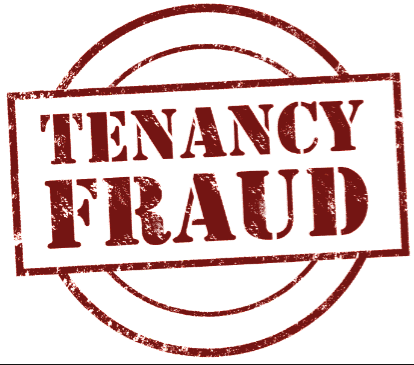Tenancy fraud is a very real and serious problem in the UK. Across the country, it is estimated that thousands of homes (mainly housing association and council homes) are being illegally occupied, costing taxpayers billions of pounds each and every year. But what exactly constitutes tenancy fraud? Octagon Capital takes a look at everything you need to know about the issue, as well as signs to look out for.
What is tenancy fraud?
Tenancy fraud refers to a property that is being occupied by a person or a group of people who do not have a legal right to live there. This may be through accessing a tenancy by giving false information and therefore gaining tenancy fraudulently. As previously stated, not only does this costs taxpayer in the UK a considerable amount of money, it also means that in certain situations, people who are in fact in desperate need of accommodation are unable to access housing, due to tenants illegally occupying buildings which then means that there is a shortage of housing that is available on the market.
What types of tenancy fraud are there?
There are a number of different categories of tenancy fraud that one can come across. The ones listed below are those that tend to be the most commonly cited:
- Unlawful subletting: this is when a tenant decides to rent out a part of their home, or the entirety of the property, without having the permission from a landlord to do so, making money from renting out the property whilst they are not living in it. It is important to note that if you are the sub-tenant, knowingly renting out an illegal sublet from someone, you may also be seen as a participant in tenancy fraud, and therefore if caught, you may have to pay a fine (remember, you will also have to deal with the fact that this will most likely appear on your criminal record too, hindering your career and credit applications in the future) due to committing a criminal offence
- Key selling: this refers to the situation whereby a resident is paid to then pass on their keys, receiving a one-off payment for having done so. It is important to note that both parties could face prosecution for having done this, as it will be seen that both parties have worked together in order to commit fraud
- Abandonment: another common scenario regarding tenancy fraud is when a resident stops living in a property and leaves but does not inform the landlord or housing association in order to stop receiving benefits they may have been entitled to as a result of living in the property.
- Getting housing through deception: a person may obtain housing due to having giving false information in their housing application
- Unlawful assignment: a tenant may stop using the property as their main home, but allow another person to live there who has not been granted permission by their landlord, housing association or the local council
- False right to buy (or right to acquire): this is when a resent makes a right to acquire or right to buy application whilst providing false information.
- Keeping a social rented home despite the fact they own another property
Why is it important to tackle tenancy fraud?
For housing management
One important reason that tenancy fraud should be tackled is that if a property has been used for fraudulent means (such as sublet to unauthorised residents, or left completely empty without informing management) then it means the housing provider in question has a lack of control when it comes to housing management. For example, that means that if the landlord is unaware of who is, in fact, living in their rented building, they may not be able to respond as effectively to problems such as repairs or issues regarding anti-social behaviour. This could have not only financial implications for the landlord (in the event that the property is severely damaged by unauthorised tenants) but also for those in the general neighbourhood too if there are problems with anti-social behaviour.
It can be re-let
Particularly when it comes to social housing in the UK, there is a shortage of public housing, and therefore tenancy fraud poses a real problem as it wastes valuable resources. If tenancy fraud is tackled, then it means that this property can then be re-let to another person or family in need, meaning that the building is used by those who genuinely appreciate it.
How to prevent tenancy fraud
There are a number of measures and ways in which the chance of tenancy fraud (or tackling cases of it) can be reduced. These include:
- Thorough identity verification checks: when a person signs up to a new tenancy, transfer or succession, landlords or housing providers should put in place additional checks in the form of verification checks in order to ensure the person is who they say they are. This may include doing a credit reference check, or training staff to focus on being able to identify forged documents
- Tenancy audits: these tend to be a successful way of both deterring as well as detecting cases of tenancy fraud. Visits to residents in their home mean that the landlord can check who is based there as well as ensure that the property is being looked after correctly
- Taking photos: it is becoming far more common for landlords and housing providers to take photographs of the resident as part of the sign-up process. This means that it is possible to verify photos against tenant records, and means that if a tenancy audit is being taken place, photos can be checked during a visit quickly and efficiently.
